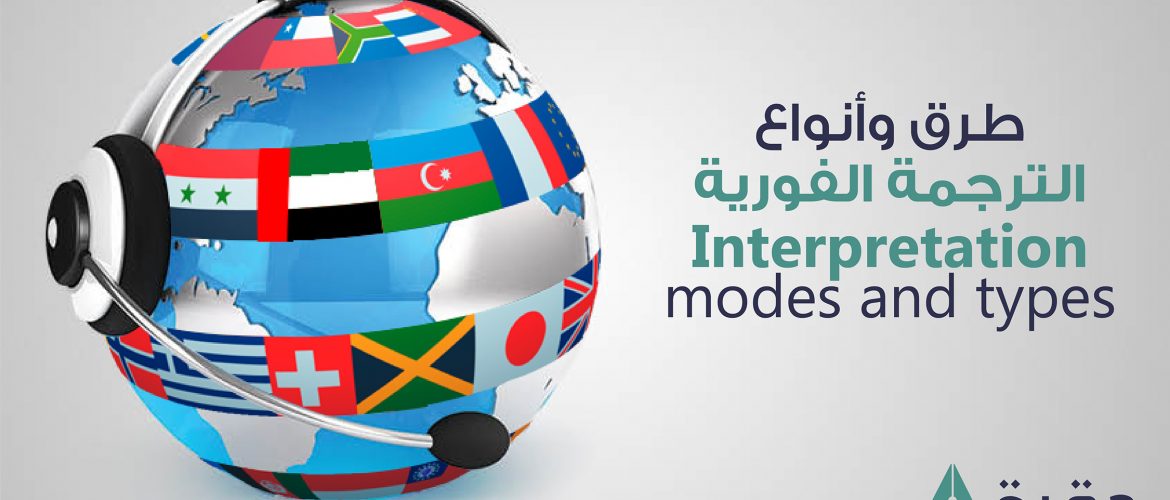Category: Interpreting Written by: Daqeeq Date: 17 Nov 2021
Daqeeq says….
Interpretation modes and types
Linguists differ in classifying interpretation in terms of their modes and types. Generally speaking, there is no right or wrong here; it is a matter how we look at the process regarding its method of delivery, or mode, technique, setting or purpose.
Traditionally, there are two types: simultaneous and consecutive, depending on the method of delivery. Simultaneous translation is instant, with a minimum delay, and is widely used in conferences, TV broadcasts of events. It is sometimes called “conference interpretation,” and requires the interpreter’s mastery of the skill, starting from comprehending accurately what the speaker is saying and rendering it into the target language audience in a way that ensures they understand everything, while the original speech continues uninterrupted.
The skill is highly demanded as the world is open, at the state, institutional, corporate and individual levels to increasingly cheap communication. According to one estimate, there are 640,000 interpreters worldwide, a quarter of whom are freelancers.
In addition to large-scale conferences and business meetings, this mode of interpretation is indispensable during the meetings of international organizations and inter-governmental institutions such as the United Nations and the EU Parliament.
There is a sub-category of simultaneous interpretation, dubbed “whispered interpretation,” which refers to the mode when the interpreter simultaneously whispers the translation in the ear of the client. Some consider this type a separate category.
Another sub-category suggested is the remote simultaneous interpretation (RSI), which is done “virtually or in a hybrid set-up with some interpreters working in booths at the venue and remotely from home at the same time,” according to interactio.io.
The other major kind is the consecutive interpretation, where the speech is paused to allow the interpreter to translate the chunk of it just completed, so that the speaker and the interpreter, who stand close to each other and take turn to address the audience. This mode relies heavily on a sharp short-term memory of translators and ability to manage the situation smoothly and confidently. It is widely used in press conferences, lectures and speech events, in addition to medical interpretations, when translators serve as a connection between medics and patients. It is also used in business and other kinds of meetings.
Travel interpretation is also a sub-category, referring to a mode when simultaneous, consecutive or whispered interpretation techniques are applied as part of a service, usually by an escorting interpreter.
Relay interpretation can be considered unique. Clients and event organizers resort to it when a given pair, or pairs, of language is missing during a communication setting. In this case, an interpreter translates into a major language like English and then another takes it from English into the target language. This is a practical solution to the situation described above, but it causes longer pauses in the process.
Other labels include the over-the-phone interpretation, which might be a solution to a situation when the meeting is held promptly and under an emergency. The shortcoming here is that inter-personal communication has advantages over this type as it better facilitates the exchanged communication.
Liaison interpretation also has its unique characteristics in that no word-by-word translation is used, but what is being said in small and informal meetings in interpreted roughly to maintain mutual understanding and cooperation.








No comments yet.